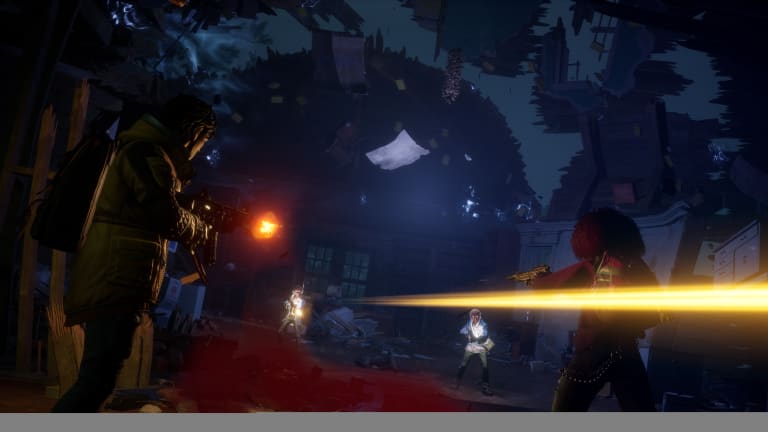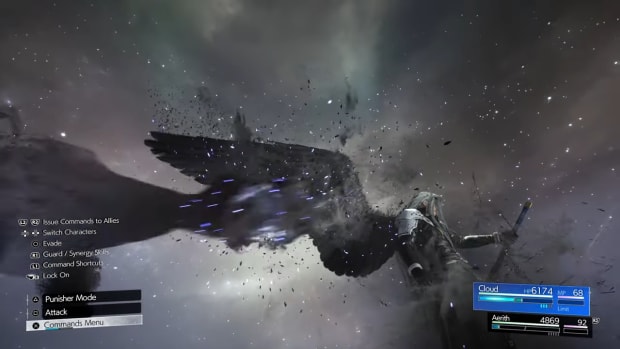
Arkane Austin on making waves in Redfall and solving problems with more problems

“I like that,” Harvey Smith says from across the table. “I’m gonna quote that.”
He’s responding to me summarizing Arkane Austin’s approach to making games: solving problems with more problems.
Smith heads up the studio that’s best known for Dishonored and Prey – two ridiculously complex games filled with little details that only a small percentage of players will ever see. Bethesda might be the only big publisher cool enough to let them do it.
Someone who doesn’t understand game development might look at Redfall – the studio’s upcoming co-op vampire shooter – and assume development has been more straightforward this time. People make co-op shooters all the time. They’d be very wrong.
Not only is it much more difficult to make a video game behave properly for four players at once (and render everything four times), but it’s also the studio’s first open-world game.
Being a story about taking down a town full of vampires who have blocked out the sun, it would have been easy to scratch one complexity off the list – day and night cycles. But no. Arkane didn’t do that. Redfall still has them, even with the sun blotted out and bleeding into a red sky.
At some point during development, lead technical engineer Manny Masciarelli came to Smith and Ricardo Bare to ask these questions: “Should the sun always be in the sky? Should it always be night? Should we bake the lighting and change the time of day whenever the player loads a mission? Or do you want it simulated with the sun moving through the sky?”
“Ricardo went over like, ‘The sun moves in the sky and the weather rolls in, there’s fog, and we want a full system’,” Smith says. “So they wrote this system called Weatherman. The artists can do a lot with it. We can also compress the times of day that we don't think are that pretty, so it's more often twilight or night, or whatever.”
This decision led to the team implementing even more intricacies since this system then had to also tie in with AI behavior, with vampires being more dormant during the day and more active at night. Smith says many of the encounters you have in Redfall will be different depending on the time of day you tackle them.
“It is a different mood playing by day,” Smith explains. “By night you turn a flashlight on more, etc. Similarly, at some point, people were like, ‘Hey, in the vision for this game, do we swim?’ We've always done swimming in our games when we can.”
The problem arises when there are four players involved. It’s one thing making it so a camera with arms can swim around without a body, but creating animations that look right when another player is watching is a different matter entirely.
“You've got to really support anything you put in, or you look like absolute garbage compared to Skyrim, The Last of Us, God of War – they're putting a lot of production value into those things,” Smith says. “We would love to swim because Corvo could possess fish and find alternate routes, and it was just cool. But we were like, ‘You know what, there's not enough inland water. So what if we don't do swimming?’”
That’s when a new issue cropped up. Redfall is set in an island town. Say what you like about islands, but they’re usually surrounded by water. So, how do you keep players out of it?
I’ve played games where you simply drown. Not fun. We’ve all seen the invisible walls and the out-of-bounds messages. Other games force you straight back onto the shore, which also feels cheap. Arkane wanted to try a different approach and so it froze the sea.
Head to the coast in Redfall and the coastline is suspended in time, arcs of waves reaching out over the sands in a final, pointless grasp.
The team realized this was a good opportunity to show how powerful these vampire gods are. They already put a black disc over the real sun, creating a localized eclipse on the island. Perhaps they could also push the tides back like Moses.
Only, this would have meant the team needed ankle-deep water, and there would still be the issue of how to do the coastlines. More problems. And how would fire interact with water here? They’d have to implement mechanics for extinguishing flames.
“We decided to do this ‘push back the water’ thing as a simulation boundary and also as a cool way to explore the harbor, the flipped-over boats, and stuff like that,” Smith says. “And I was like, ‘I mean, it's easier in a sense, because there's no water, there's no swimming. And the only problem is this wall of water around the edge. But what if we just model a big piece of like, telekinetically-suspended water?’ And that's where it goes off the rails.”
The team looked at other media and art for inspiration, noting how the object wouldn’t be completely static and would be coupled with other things like boats caught in a wave, filled with flotsam and jetsam, and becoming less viscous as it gets further out to sea.
“If they came to me and said,’This is going to be a year’s worth of work’, I might have been like, ‘Fuck the water wall, let's just kill them when they get to the edge of the shore’,” Smith laughs. “But that didn't happen. Instead, they were like, ‘There's no way to do it the way you're talking about because that object would be so fucking big. Or it would be a bunch of separate objects and it would take up a lot of memory.’”
In the end, the tech art team came up with a way to create the water wall using a procedural spline tool – similar to the ones used to create curbs and other objects in open-world games.
“But to do it so that it has spray coming off the top, and it has debris stuck in it, and if you look deeply into it, you see things moving – like a drifting body or whatever – and it catches the light the right way, and it has this creepy sound when you get close to it…” Smith says. “That it doesn't tank the frame rate or the memory on the Xbox Series S was a lot of tech-art work.”



